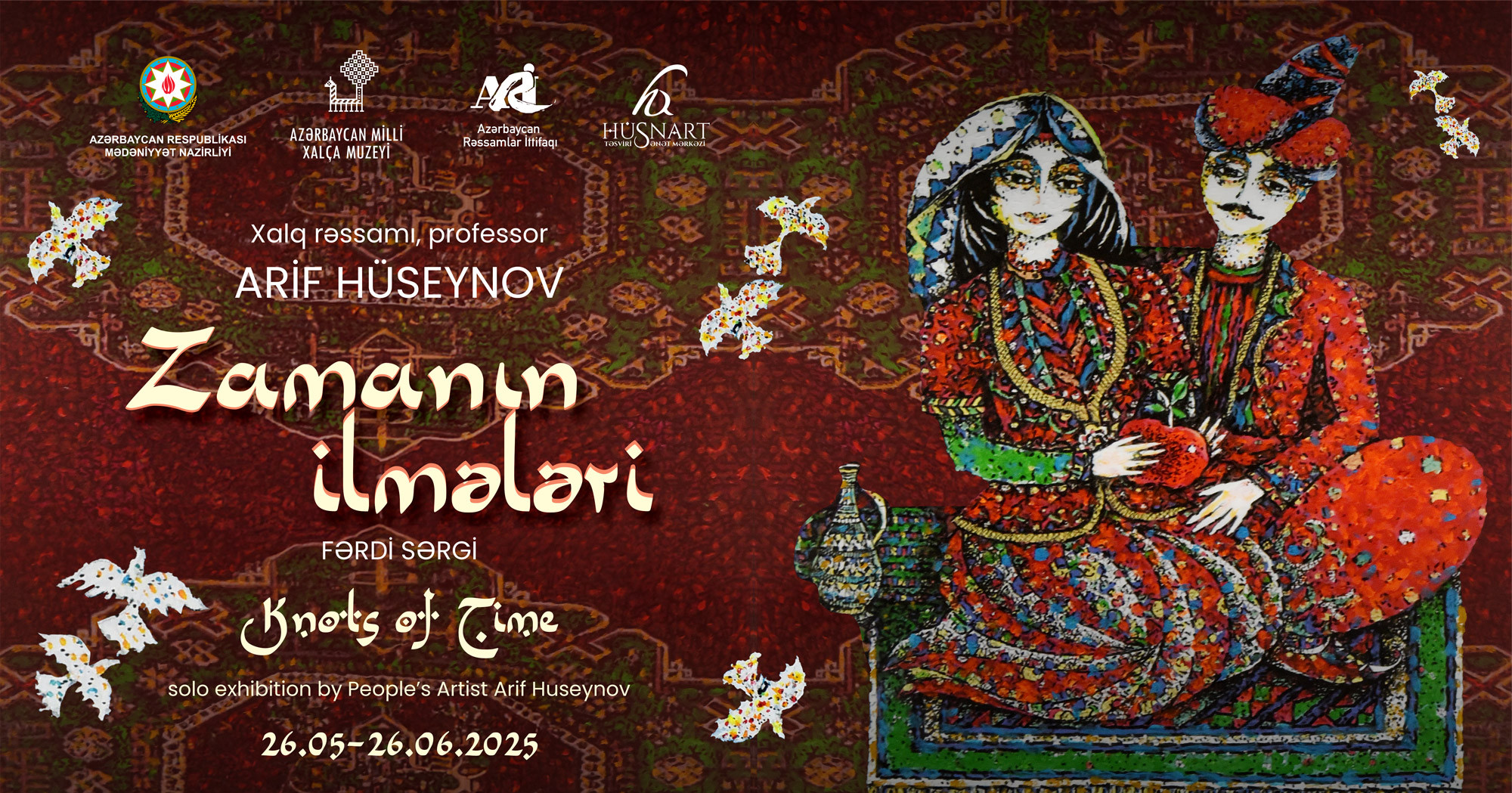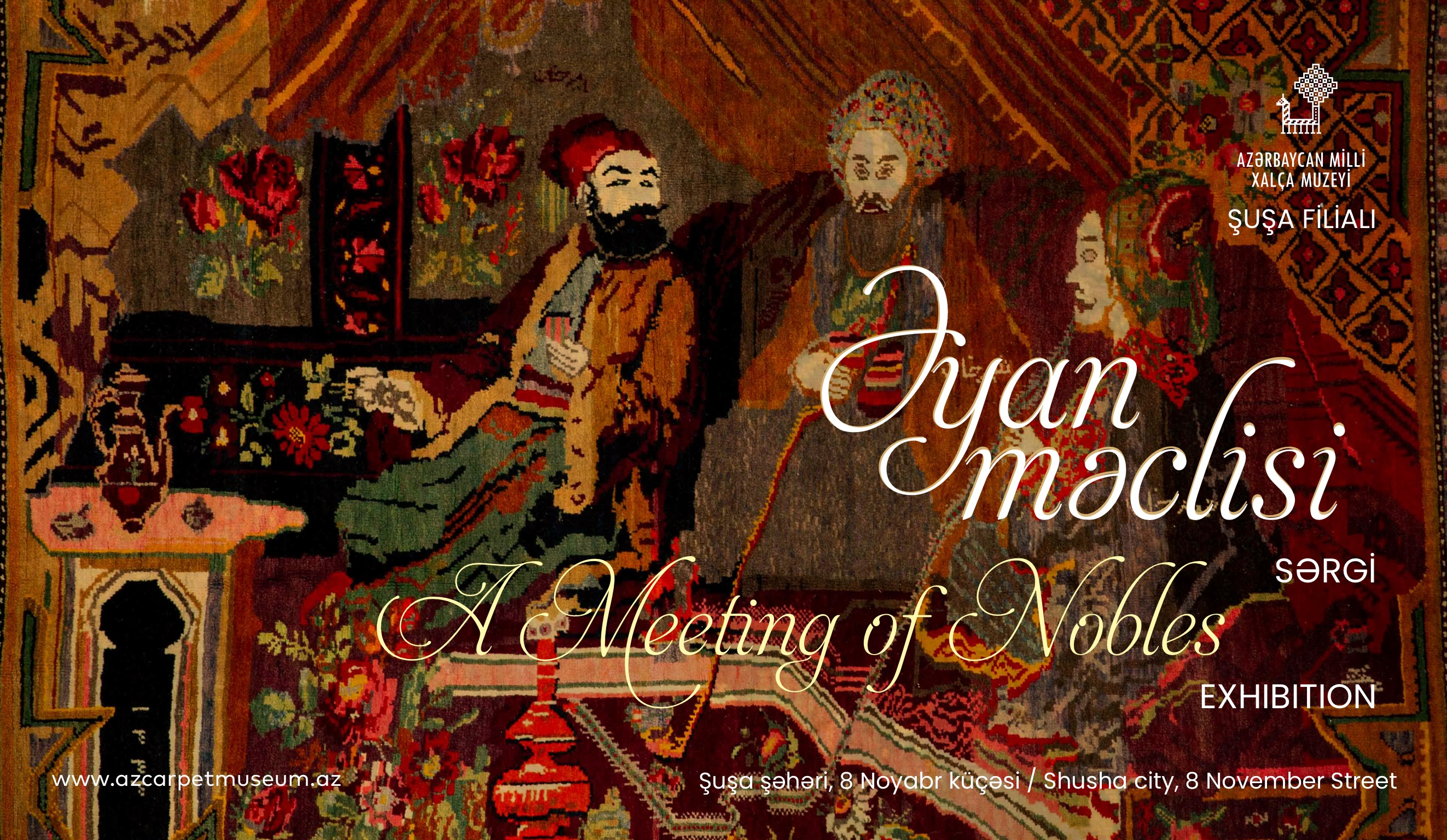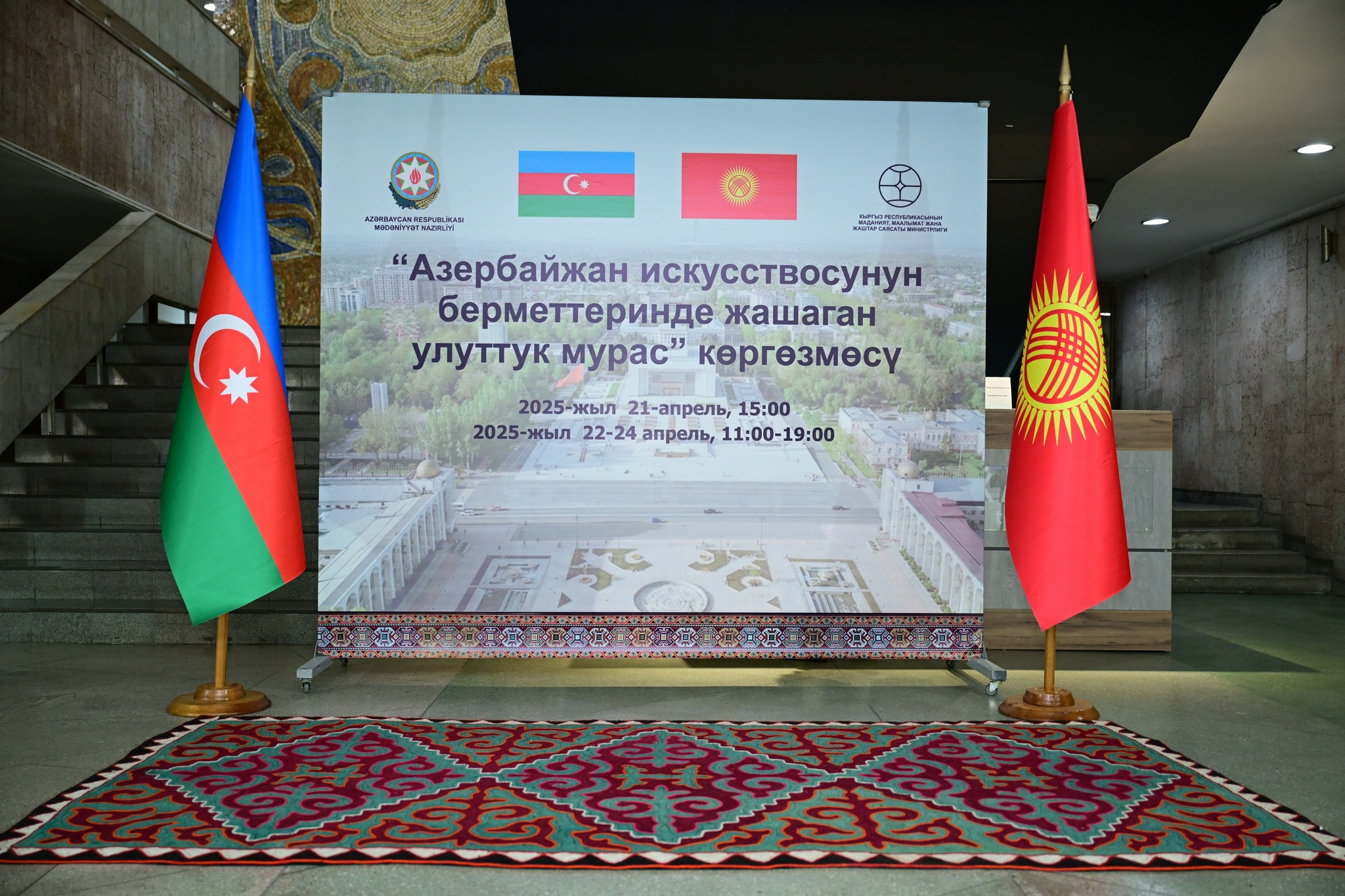Carpet Jairli
This Friday's choice is two beautiful carpets from the museum's Pile Carpets collection.
Carpet Jairli. Shirvan, Azerbaijan. Early 19th century. Warp, weft, pile – wool. 122x161 cm. Inv. No. 7331
This 19th-century Jairli carpet named after the village of Jairli, 8 km northwest of Gobustan is one of the most interesting samples of Guba-Shirvan type. The carpet’s field builds from an Aghajli composition. Light blue branches, leaves, and seeds, along with red, white, and yellow pomegranates against a navy background, symbolize abundance and fertility. Shirvan carpets were often patterned with motifs of pomegranate trees. The pomegranate has been a symbol of fertility and immortality in the East since antiquity. The pomegranate was treasured as a miracle of nature, able to grow in the rough and arid soil of desert. It played a significant role in the cult of Zoroastrianism, where it symbolized the fire. To enhance the design, the border is decorated with flower corollas lined up one after another. The color of the double border with a gab-gabi structure that lies between the wide border and field complements them both. The other borders include torches, wheels, stars, meanders, and mollabashi elements, which also carry symbolic meanings.








